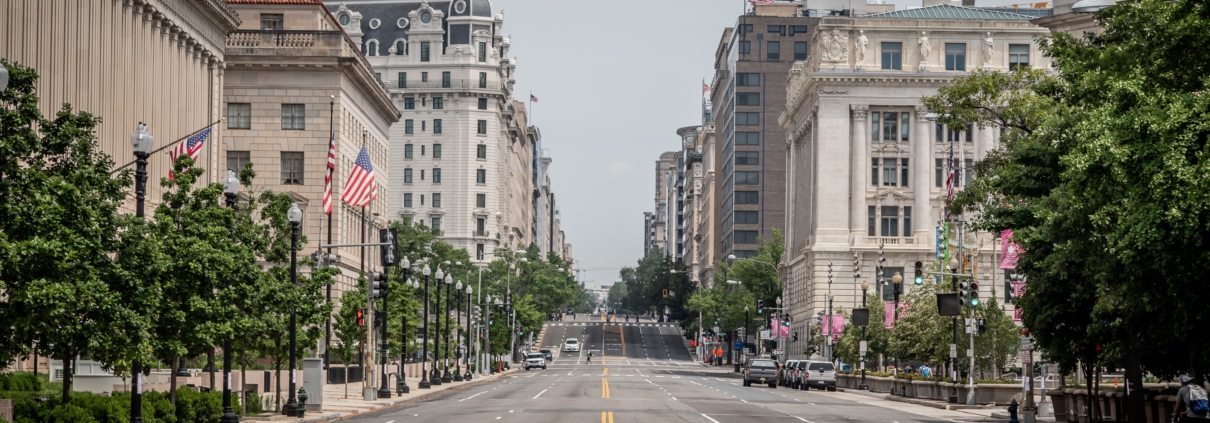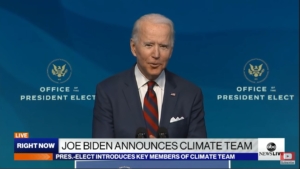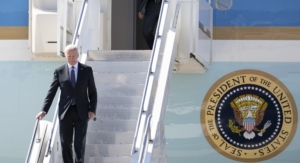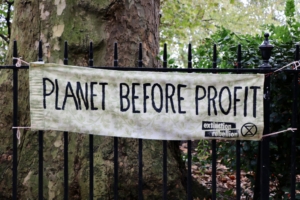WOE is U.S.
Here’s What You Need To Know
Is Bidenomics a boom or a bust? The U.S. economy reportedly grew at a fast 4.9% annualized pace in the third quarter, “payrolls soared” in September as unemployment remained under 4%, and analysts are raising their economic forecasts. Yet, despite The White House spending the past four months insisting “Bidenomics is working,” Americans remain unconvinced and even the President’s allies worry his economic bear hug has been a “blunder.” What is driving this disconnect should worry every public affairs professional.
While Democrats think it’s a messaging conundrum, the reality is more fundamental: President Biden has overseen what President Trump started: a Washington-Ordered Economy that leverages public funding to advance industrial policies that in turn drive investment. Yet, all that government money flooding the economy has spiked inflation, leaving many Americans treading water.
With Washington’s gaze remaining too long on macroeconomic indicators that do not match Americans’ microeconomic experience, policymakers striving for real economic growth, public affairs professionals trying to shape their thinking, and companies leveraging government incentives may all need to rethink their embrace of Washington-directed investments. Here’s what you need to know to navigate this new economic reality.
Subscribe to Receive Insights
"*" indicates required fields
Washington’s Economic Barometer Is Broken
While the macroeconomic indicators suggest the economy is “revving up,” most Americans feel run over. That’s because inflation remains high, meaning “a homebuyer’s dollar goes about half as far as it did at the end of 2020,” rent affordability is at its lowest level in decades, and the typical American household is spending about $730 per month more than it did a year ago, even as inflation-adjusted wages have decreased since President Biden took office.
Policymakers, their teams, and the public affairs professionals that shape the Washington debate have long relied on macroeconomic indicators like stock market indices, unemployment rate, and the price of consumer goods like groceries and gasoline to assess the nation’s economy and inform policy decisions. Yet today, two of these three indicators are increasingly disconnected from economic reality.
Indeed, Federal Reserve Chair Jerome Powell acknowledged in his annual Jackson Hole speech these “uncertainties” leave the Fed and other policymakers “navigating by the stars under cloudy skies.” This disconnect is not limited to the U.S. At the same event, European Central Bank President Christine Lagarde warned we are entering a “new age” in which “past regularities may no longer be a good guide for how the economy works.”
Trouble With The (Phillips) Curve
While stock markets often monopolize political attention, the truth, as we noted several years ago, is “The Stock Market Used To Tell Us How the Economy Is Doing. Not Anymore.” That’s in large part because much of the economy now resides within the private markets. Financial expert Greg Crabtree, based on his 100-company model of small and medium-sized private businesses, suggests the ‘real’ economy may already be in a recession, an alarming reality largely overlooked by Washington.
Meanwhile, the conventional fixation on the headline unemployment rate has been losing its relevance for years. We first explained why “the unemployment rate is dead” in an Obama-era analysis and revisited it under Trump. Between a persistent decline in the labor force participation rate, driven by demographic shifts, and under Biden the growth in workers holding multiple part-time gigs, the topline unemployment rate is no longer describes most voters’ reality.
Yet, as highlighted in Chair Powell’s recent speech, policymakers continue to rely on the discredited Phillips Curve, linking employment and inflation even as the modern economic landscape challenges this direct relationship. Low inflation can coexist with low unemployment and strong economic growth, just as low employment currently coexists with rampant inflation.
That leaves consumer prices like gas and groceries as the last compelling economic statistic left standing when it comes to swaying voters. Just as that certainly has implications on the campaign trail, this new reality must also shape policymaking and advocacy in Washington.
Yet Washington Is More In Charge Than Ever
Even as the metrics Washington watches are more disconnected from economic reality, Washington’s influence over the economy has reached unprecedented levels. Elected officials in both parties, corporate leaders, and investors all have embraced a post-COVID era marked by industrial policy initiatives to address supply chain woes, thwart China’s influence, reignite America’s manufacturing base, and address climate change.
While the injection of funds from the government can help mitigate the increased costs and regulatory pressures needed to achieve these policy goals, it requires abdicating corporate autonomy as political agendas become embedded in business strategy. Take for example:
- The IRA’s carbon capture provisions, which hiked incentives for investment, but only if projects pay prevailing wages and adhere to union-approved training programs;
- Semiconductor incentives in the CHIPS Act were tied to a childcare mandate;
- Proposals to reshore pharmaceutical manufacturing come amid increasing pressure to reduce drug prices or face further government intervention;
- The White House adding environmental justice requirements to the carefully negotiated permitting reforms in the debt ceiling deal.
Once government is investing in your sector, expect scrutiny and political pressures to follow. Just as pressure built on firms that took COVID-era assistance, companies taking advantage of today’s government largess can expect elected officials and the public to probe – fairly and unfairly. Indeed, infrastructure developers and cleantech firms with foreign involvement already face pushback for making U.S. investments incentivized by government policies.
Even As Washington Faces Increased Political Chaos
As the “Washington Ordered Economy” unfolds within an era of hyper-polarized governance where commerce is increasingly entangled in political agendas, the scrutiny and pressure on companies will only rise, even as these policies lack certainty. Current laws, especially those rammed through by one party without the support from the other, are susceptible to change or repeal when control of government changes hands. In an era where nearly every election has been a change election, that should give companies real pause.
Business leaders face the daunting task of preparing for heightened scrutiny across diverse jurisdictions, amplified by a broader range of stakeholders and an expanding array of intricate issues, even as they rely on Washington to advance their economic interests in an economy Washington understands less and less. Surviving and thriving in this complex landscape means taking a proactive approach to understanding and mitigating constantly evolving dynamics between government and commerce. Here at Delve, we offer a playbook to do just that.



